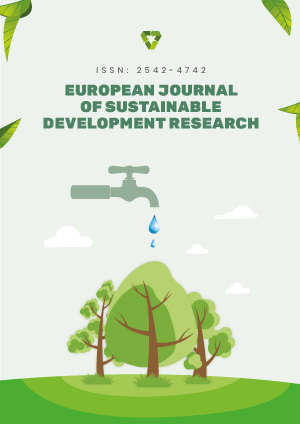Abstract
This paper examined the impact of changing climate patterns (represented by square and cubic CO2 emissions) on selected development drivers (proxy by gross domestic product [GDP] per capita [GDPC] and official development assistance [ODA]). Environmental Kuznets curve (EKC) provided the theoretical backdrop of this study, referred to as the core second-generation EKC (SGEKC) hypothesis. SGEKC was modified to obtain the transposed SGEKC. The transposed SGEKC was conceptualized based on the one-way criticism of the EKC. An unbalanced PMG (ARDL) method was utilized to investigate the impact of the changing climate patterns on GDPPC–(to capture EKC hypothesis) and ODA–(to capture pollution haven hypothesis) in the West African Monetary Zone (WAMZ). This study, therefore, leveraged data from world development indicators between 1970 and 2019. The result showed that the one-way impact of CO2 emissions on GDPC has a long-run N-shaped. The outcome of the GDPC model (in the transposed SGEKC hypothesis) is consistent with the core SGEKC hypothesis. On the other hand, the impact of CO2 emissions on the ODA showed an inverted N-shaped in the long run. The inverted N-shaped relationship does not support pollution-haven hypothesis in the long-run. The results, therefore, imply that the changing climate patterns have a more disruptive impact on income per capita and less on ODA. In the short-run, the result showed the existence of an inverted-N and N-shapes for GDPC (SGEKC does not hold) and ODA (presence of pollution haven) respectively. In conclusion, changing climate patterns present a long-run threat to the economy of WAMZ which in turn could disrupt economic agents’ interactions, de-optimize economic aggregates and economic equilibrium, as well as negatively affect the attainment of a long-run regional development objectives. This study recommends that WAMZ’s government(s) should fast-track the implementation of robust carbon pricing mechanism and abatement policy that would enable climate mitigation policy, improve the regions nationally determined contributions (NDCs) targets, and insulate the economies from policy uncertainty associated with climate change.
License
This is an open access article distributed under the Creative Commons Attribution License which permits unrestricted use, distribution, and reproduction in any medium, provided the original work is properly cited.
Article Type: Research Article
EUR J SUSTAIN DEV RES, Volume 6, Issue 4, 2022, Article No: em0199
https://doi.org/10.21601/ejosdr/12274
Publication date: 26 Jul 2022
Article Views: 1991
Article Downloads: 1295
Open Access References How to cite this article
 Full Text (PDF)
Full Text (PDF)